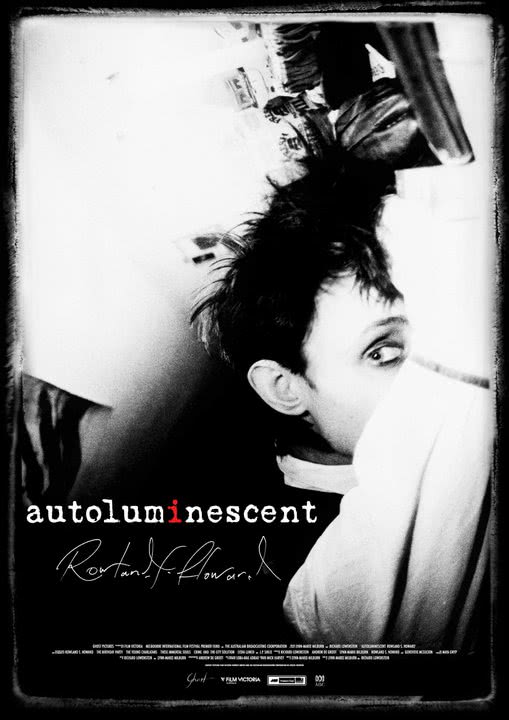Directors Lynn-Marie Milburn and Richard Lowenstein have created a highly revealing and, at times, painfully honest portrait of late singer/songwriter/guitarist Roland S. Howard in “Autoluminescent:Roland S. Howard”.
Howard got his start in music in the Melbourne underground scene of the late 1970’s. He is perhaps most famous for his work with the infamous The Birthday Party, of which he was a crucial part.
His abrasive, utterly unique and distinctive guitar sound and style were highly innovative on a sonic level, and contributed greatly to the overall confrontational nature of the band, lead by Nick Cave.
The documentary is incredibly enlightening and informative in illustrating Howard’s struggles as an artist. A good case in point is the song “Shivers”.
Howard’s version, with him singing, is completely different to that of the version made famous by Cave when both were part of The Boys Next Door, which later morphed into The Birthday Party.
It is incredibly interesting that a highly relaxed and candid Nick Cave, in interview clips in the doco, admits that Howard should have sung vocals, and shows how singers interpret songs in different ways.
“Autoluminescent” is Roland S. Howard very much looking back on his life. He is interviewed at length for the documentary. He very much was staring down at his own mortality when doing so; it is obvious that he was very ill when the interview took place. The documentary highlights both the mans strengths and flaws.
For starters, apart from his groundbreaking guitar style, which influenced artists such as Sonic Youth’s Thurston Moore, Bobby Gillespie of Primal Scream and Kevin Shields from My Bloody Valentine, all of which feature in interviews for the documentary, Howard’s abilities as a songwriter are very much to the fore.
They highlight this fragile soul who was probably at his most raw and naked emotionally when it came to his lyrics, his solo album “Teenage Snuff Film” is very much a testament to this.
There is a great selection of interviews in “Autoluminescent” from people that knew Howard the best. These include German film director Wim Wenders, who filmed Howard when he was part of Crime + The City Solution for what turned out to be one of the finest films of the 1980’s, “Wings Of Desire”.
Other interviews include Howard’s former girlfriend, singer/performance artist Lydia Lunch, fellow Birthday Party member Mick Harvey and the wonderful Bruce Milne, head of Au Go Go Records and more recently famous for The Tote and the Save Live Australian Music movement in Melbourne.
At times, “Autoluminescent” is incredibly raw and tough viewing on an emotional level. It discusses, in unflinching detail, Howard’s ongoing health issues and his drug use.
The most heartbreaking moment is when, in an interview from the late 1980’s, he laments the time wasted with drugs and what he could have done with his life instead. This was a man who was always candidly honest; a great example of the philosophy of ‘say what you mean and mean what you say’.
In all, this is a fascinating and highly revealing documentary about a man who has definitely influenced and helped shape music as we know it on both a national and international level. His absence is truly felt after watching this wonderful portrait of the man.

































